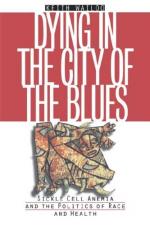|
This section contains 1,282 words (approx. 5 pages at 300 words per page) |

|
Sickle cell anemia is an inherited blood disorder that arises from a single amino acid substitution in one of the component proteins of hemoglobin. The component protein, or globin, that contains the substitution is defective. Hemoglobin molecules constructed with such proteins have a tendency to stick to one another, forming strands of hemoglobin within the red blood cells. The cells that contain these strands become stiff and elongated--that is, sickle shaped.
Normal hemoglobin is composed of a heme molecule and two pairs of proteins called globins. Humans have the genes to create six different types of globins--alpha, beta, gamma, delta, epsilon, and zeta--but do not use all of them at once. Which genes are expressed depends on the stage of development: embryonic, fetal, or adult. Virtually all of the hemoglobin produced in humans from ages 2-3 months onward contains a pair of alpha-globin and...
|
This section contains 1,282 words (approx. 5 pages at 300 words per page) |

|


